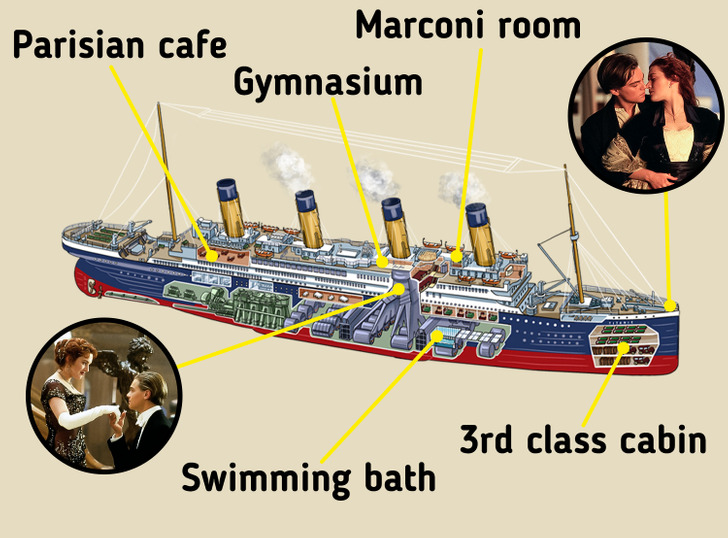A Guide to the Different Parts of a Ship
Ships are made of steel and even though they vary in size, most of them share the same anatomy. If you are curious to know more about sailing, you could start learning about the different parts of a ship.
5-Minute Crafts prepared a guide for you so you can get familiar with nautical terms and the construction of sailing vessels.
Parts of the ship and their function
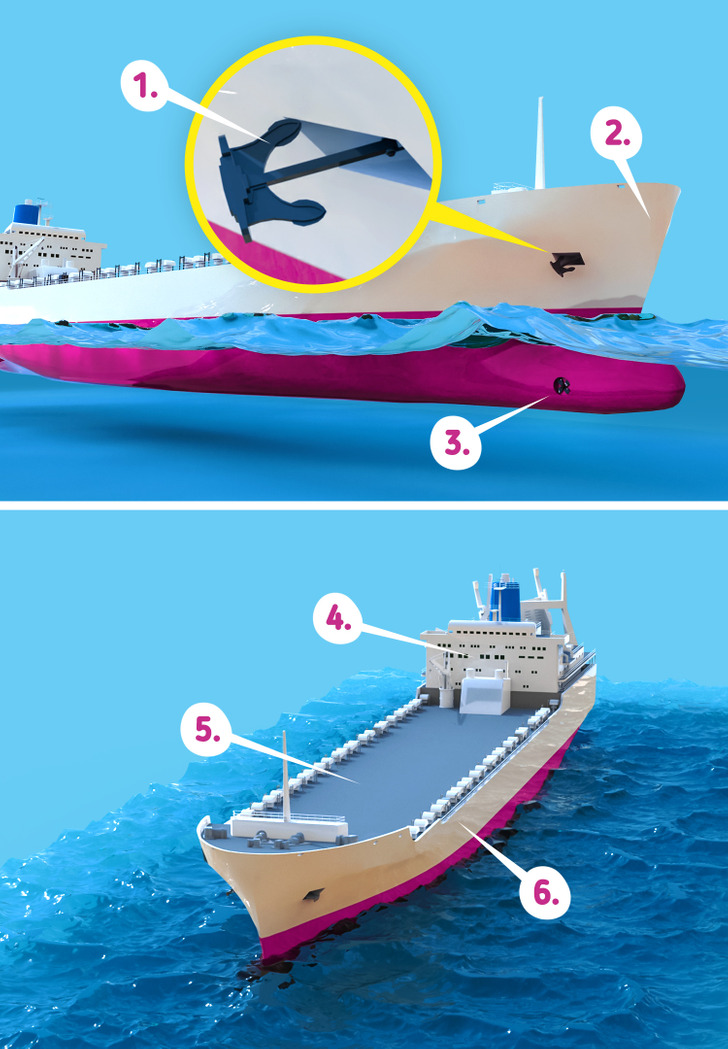
- Anchor: a piece of heavy metal, connected to the chain cables and used to hold ships in one place. Anchors secure them from the effects of wind or tide currents. They have 5 parts: shank, crown, stock, flute, and tripping ring.
- Bow: the front-most part of the ship, designed in a way to reduce water resistance while sailing. They cut through the water and have 2 key requirements: bows need to have minimal drag (the resistance between the ship and the water) and it must be tall enough so the water can’t splash too easily on top of it. There are 3 types that are the most used: the bulbous bow, the inverted bow, and the axe bow.
- Bow thrusters: look like propellers placed in a tunnel that passes through the ship’s bow. They can be seen on both sides of the ship’s bow and their main function is to increase mobility when the vessel is moving slowly (for example, near a port or in canals, etc.)
- Accommodation: or the living quarters of the crew. It is required by law that the proper accommodations should be provided for the people onboard.
- Deck: is the floor that covers the ship’s hull. The topmost one is called the main or weather deck. A ship can have different decks in different sections, and the level of each floor gets counted the further below the main deck it is, meaning the main deck is deck 1: the one that is below it is deck 2, and so on. Depending on what level they are, there can be 6 main types: main deck, poop deck, upper deck, lower deck, weather deck, and foredeck.
- Hull: is made of steel, and covers and protects the inner part of the ship while reducing the water drag. It is made of plates that are joined together and are coated with special paint that can lessen the water-resistance while moving through it.
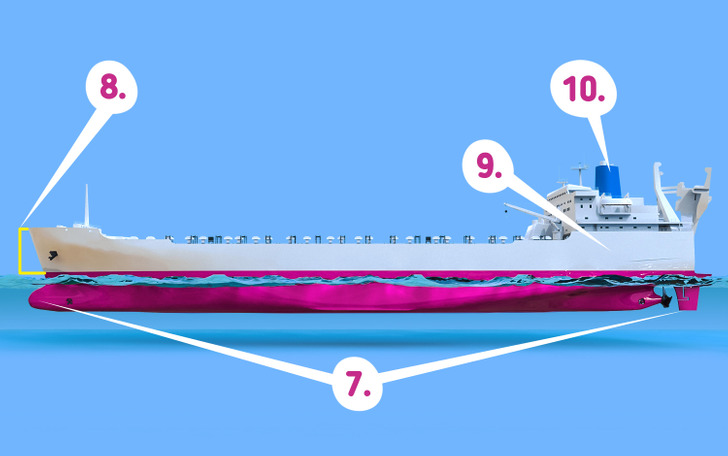
7. Keel: one of the key parts, often called the backbone of the ship. It supports the structure while placing the load equally along its longitudinal sides. A keel is actually a plate that goes from bow to stern. It provides stability and can increase effective speed. There are 3 types: flat keel, duct keel, and bar keel.
8. Freeboard: is the distance between the upper deck and the point of the waterline. It is not fixed because it depends on the amount of cargo that is loaded on the ship. However, there is a minimum freeboard that is required to keep the ship from sinking. The freeboard lines maintain the stability and safety of the ship.
9. Engine Room: contains different kinds of machinery that are necessary for the ship to operate properly. It’s located on the lowest deck and it holds the main engine, the auxiliary engine, the shafting, the boiler, a fresh water generator, etc.
10. Funnel: it’s basically the chimney of a ship through which the exhaust gases are emitted into the atmosphere.
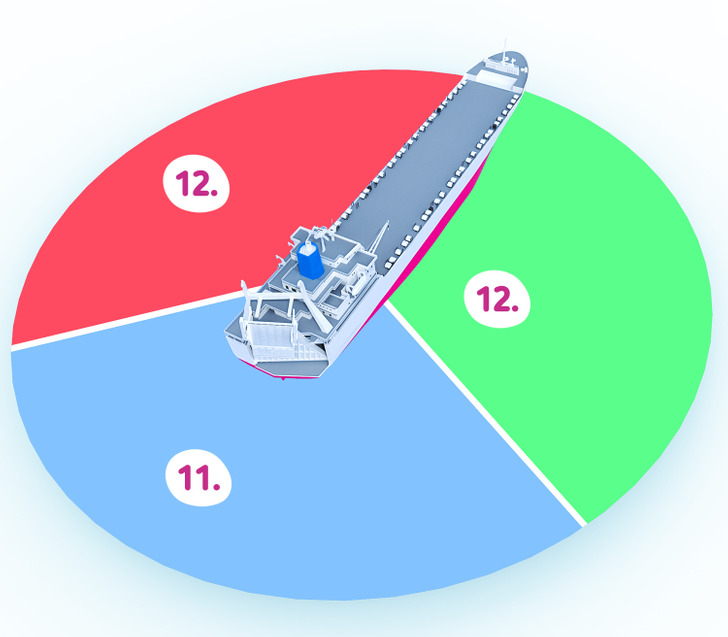
11. Stern: it’s the back part of the ship that provides room for the tiller and steering devices.
12. Port and Starboard: these terms are used to refer to the left and the right side of the ship. So, if the vessel is looking forward, the port would be the left side and the starboard the right side. In a schematic view, the port is colored with red and the starboard with green color.
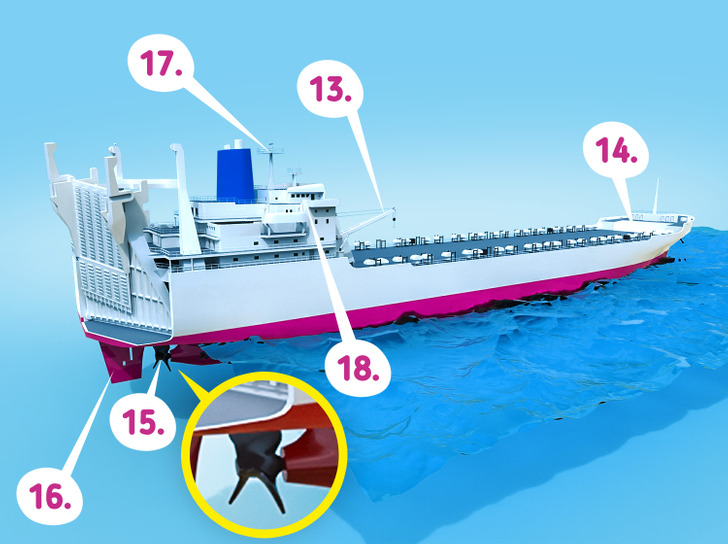
13. Deck Crane: some ships do not have a deck crane, but this part is used for loading and unloading cargo, machinery, or some other tools.
14. Forecastle: the front part of the upper deck and the foremost part of the ship. It’s where you see a sudden rise in the foredeck and it holds the equipment that is needed for anchoring.
15. Propeller: a rotating mechanical device that gives a thrust to propel the ship. The propellers are pushing the water backward while making the resultant force that moves the ship forward. This is one of the most vital parts, as it makes the ship mobile.
16. Rudder: a part that can steer the ship and that is controlled by a steering gear system. While moving, it creates resistance with the water so that this force can turn the ship in the right direction.
17. Mast: a vertical part that is mounted toward the ship’s bow and has the necessary equipment like a radar receiver, a navigation light, the ship’s horn, flags, etc.
18. Navigation Bridge: a place at the top of the accommodation from where the ship is controlled. The main part is called the pilothouse which controls and steers the vessel. This is where the crew can change the moving speed, communicate, and monitor the outside sea conditions.
Bonus: inside the Titanic
The RMS Titanic was a British passenger liner and the largest ship afloat at the time it entered service. The ship was approximately 882.5 feet (269 meters) long. It was presented to the public as unsinkable, but its first journey turned into a disaster.
That story is well-known thanks to the movie, Titanic (1997), which was directed by James Cameron. The picture above shows a plan of that ship with its unique features. The Titanic had a huge first-class dining saloon, 4 elevators, a Turkish bath, a gymnasium, and a swimming pool. Its second-class accommodations were comparable to first-class features on other ships, and even passengers in third-class were traveling in relative comfort.
